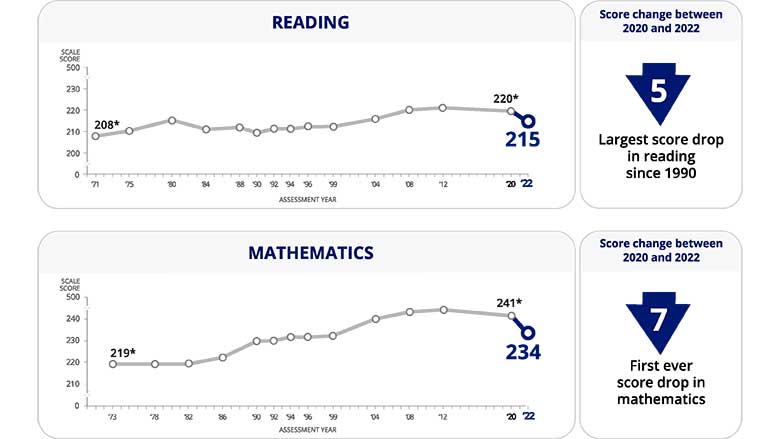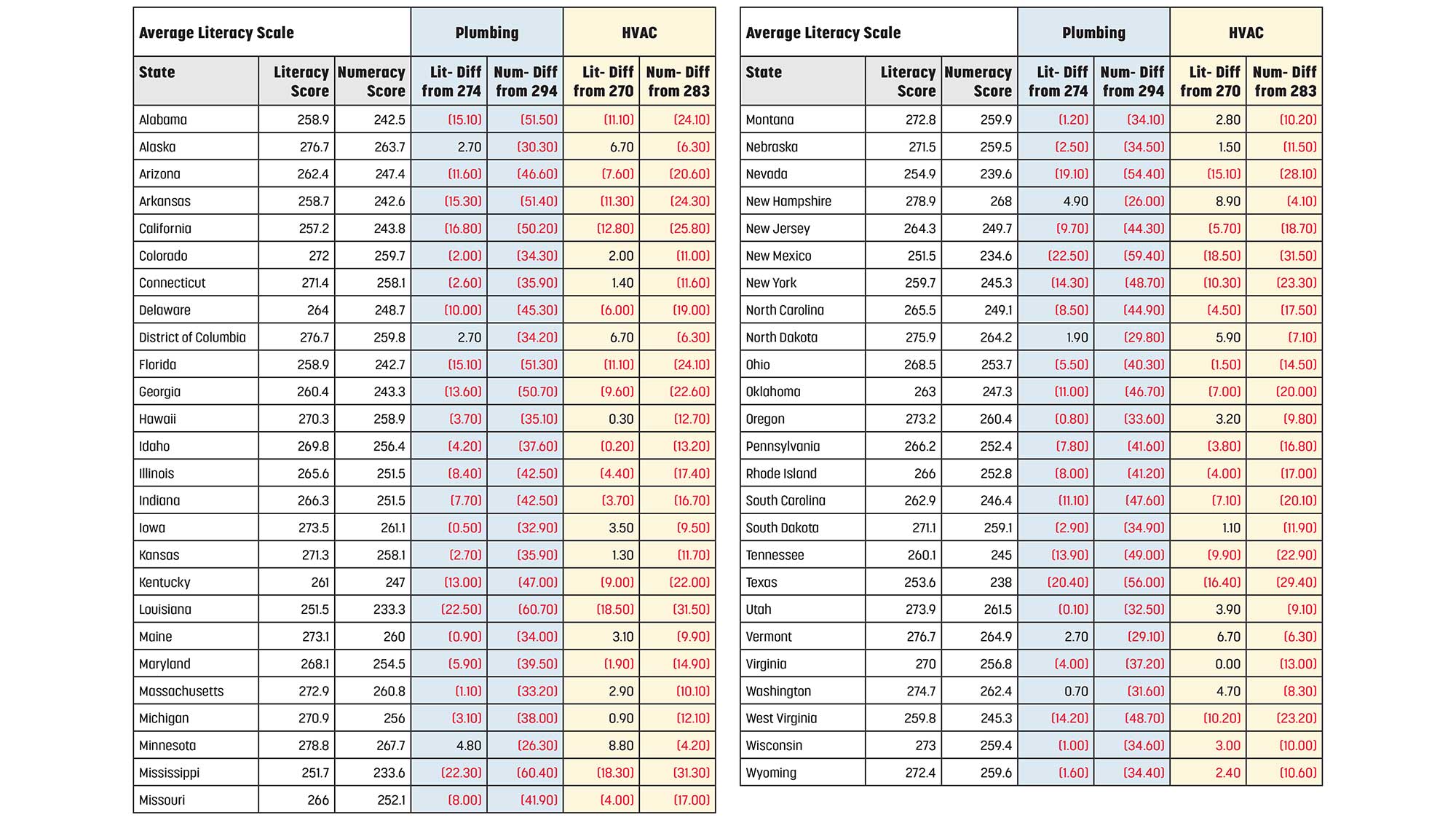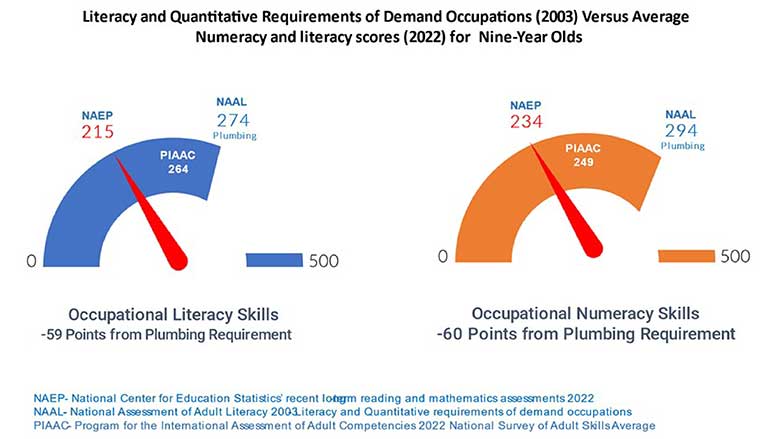Michael Copp: U.S. student math, reading scores will impact the trades
Decreasing scores could exacerbate ongoing workforce shortages.

Image courtesy of francescoch / iStock / Getty Images Plus
Three things you need to know:
- A significant barrier to creating the workforce necessary for the 21st century includes “reading comprehension and writing, mathematics and social skills that support productive teamwork;”
- Local workforce boards leverage federal funding to support local and regional workforce training initiatives that contractors can access; and
- Contractors should consider engaging local educators, policymakers, parents and community and religious leaders to mitigate real-life adversities revealed by many young adults.
Understanding the impact
The National Assessment for Educational Progress (NAEP) reported in what’s referred to as the "nation’s report card" in September 2022 that recent long-term reading and mathematics assessments during the COVID-19 pandemic showed that “average scores for age 9 students in 2022 declined five points in reading and seven points in mathematics compared to 2020. This is the largest average score decline in reading since 1990, and the first-ever score decline in mathematics. Parenthetically, more troubling is that scores reflect a greater decline for lower-performing students.
 Image courtesy of The Nation’s Report Card. Click image to enlarge
Image courtesy of The Nation’s Report Card. Click image to enlarge
Rebecca Graf (2022) in her article, “Declining Reading Proficiency in High School Students,” reported that “between 10% to 16% of those aged from 5 to 16 years will have reading difficulties." Neeta Fogg, Paul Harrington and Ishwar Khatiwada with Drexel University’s Center for Labor Markets and Policy reported in 2019, “Skills and the Earnings of College Graduates,” that “one out of every five bachelor's degree holders among employed college graduates ages 21 to 65 lacks minimum skills in literacy [and] for numeracy, the number is one in three. Employers seeking workers find that a four-year college diploma is no guarantee of strong literacy or numeracy skills.”
State averages for adult literacy and numeracy scores compared to plumbing (274 and 294) and HVAC (270 and 283) respectively are shown in the following chart:
State Indicators of Average Adult Literacy and Numeracy
 Click image to enlarge
Click image to enlarge
In 2003, pipelayers, electrical and electronic repairers, and plumbers required "basic" to "intermediate" skills in both literacy and numeracy as defined by the following table. The average 2022 national scores of high school and GED graduates reported by PIAAC’s 2022 National Survey of Adult Skills were 264 literacy and 249 numeracy.

Click image to enlarge
Given significant health, safety and welfare protections associated with p-h-c products and services, contractors are looking for candidates with "basic" and "intermediate" math and reading skills, an ability to learn, strong communication skills and an ability to get things done through others. Occupational requirements for plumbing (274 literacy and 294 numeracy) and HVAC (270 literacy and 283 numeracy) reveals deficits of -10 and -45 points, respectively, for plumbing occupations, and -6 points and -34 points, respectively, for electrical and electronics repairers, commercial and industrial equipment (I’ve included HVAC occupations for the purposes of this article).
The resulting gaps to be made up are more distressing when you compare p-h-c occupation literacy and numeracy requirements between NAEP results and occupational requirements.


The PHCC Educational Foundation notes that apprenticeships — in addition to on-the-job training — require not just being good with one’s hands and being mechanically inclined, but developing proficiencies in “mathematics applicable to pipe work; physics with emphasis on liquids and gases; elements of hydraulics and heat; mechanical drawing; plumbing theory, including materials, sanitation, elements of bacteriology and piping systems.” Unless there is an effective intervention for students who are now in fourth grade, these job applicants may not be employment-ready in eight years and will potentially exacerbate the ongoing workforce shortages that exist in the plumbing and HVACR industry (which now promotes the trades to students in as early as middle school).
Lee Bruno, Ying Ji, and Dwayne Norris with the American Institutes for Research wrote in their 2010 report, “Workers in Declining Industries: Literacy’s Role in Worker Transitions,” that “a significant barrier to creating the workforce necessary for the 21st century is the lack of work preparedness skills in new workers [to include]… literacy skills of mathematics, reading comprehension and writing, and social skills … that support teamwork, good interpersonal communications and responsible workplace behavior.”
There is a potential negative impact from virtual learning (and teleworking to some extent) as a modality for instilling collaborative gravitas and ethos required within a corporate culture. This may explain why a growing number of young employees seek out mentorships as they begin their careers. So, in addition to a growing labor force with insufficient reading and math literacy, candidates may potentially lack "corporate literacy"— social or communal skills needed within an interconnected, fast-changing and competitive environment.
Contractors will likely have to educate and provide mentoring during new employee onboarding and ongoing professional development process — and can get help from local workforce board training and employment resources. Contractors and association chapters can access local workforce boards for candidate placement options who come with funding for training already approved in addition to other efforts.
Few contractors and local chapters are aware of the existence of local workforce boards, which place applicants into jobs by identifying candidates for apprenticeships and provide federal funding to place and train candidates. The National Association of Workforce Boards (NAWB) “represents more than 500 business-led Workforce Development Boards and the 12,000 business [with] more than $4 billion in annual federal funding to support local and regional workforce training initiatives” in 2015. That year its members helped “more than 13 million people, placing 7.8 million people in jobs.”
Unless there is an effective intervention for students who are now in fourth grade, these job applicants may not be employment-ready in eight years and will potentially exacerbate the ongoing workforce shortages that exist in the plumbing and HVACR industry (which now promotes the trades to students in as early as middle school).
Contractors may consider offering after-school programs such as "ride and decide" programs; participating in career fairs; talking to your HR professional about offering self-paced employee workplace literacy and numeracy programs; and providing formal mentoring to young employees. In a broader effort, contractors should consider engaging local educators, policy makers, parents and community and religious leaders to tackle real-life adversities such as substance abuse, mental illness, domestic violence, poverty and other insecurities revealed by many young adults.
The nation’s report card shows that the drop in scores nullifies gains made since 1992. While adults will continue to debate the causes of these lower literacy and numeracy scores, especially as it relates to education during the pandemic, their kids are in immediate need of remediation. You can be an integral part of sowing a communal fabric of care that helps young people flourish and eventually succeed as productive employees within your company.
For more great information from the PHCC Business Intelligence Team, check out www.web.org/membership.
Looking for a reprint of this article?
From high-res PDFs to custom plaques, order your copy today!









